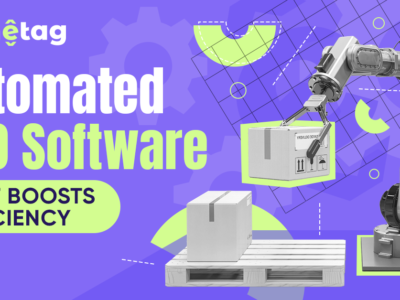Navigating the world of employment can sometimes feel overwhelming, especially when you need to gather your employment history. Whether you’re applying for a new job, seeking a loan, or even filing for unemployment benefits, having a clear record of your work history is essential. In this guide, we’ll break down everything you need to know about obtaining your employment history in the U.S. simply and straightforwardly. We will also touch on using a check stubs maker to keep your records organized.
What is Employment History?
Your employment history is a detailed record of your past jobs, including the companies you worked for, your job titles, the duration of your employment, and sometimes even your responsibilities and accomplishments. This information is often required by potential employers, lenders, or government agencies.
Why Do You Need Your Employment History?
There are several reasons why you might need your employment history, including:
- Job Applications: Employers typically require a detailed account of your work experience.
- Background Checks: Many companies conduct background checks to verify your employment history.
- Loan Applications: Lenders may ask for your employment history to assess your financial stability.
- Unemployment Claims: If you’re applying for unemployment benefits, you’ll need to provide your work history.
- Reference Checks: Some employers may contact your previous employers to verify your work history.
Steps to Obtain Your Employment History
1. Gather Personal Information
Before you start the process of obtaining your employment history, it’s helpful to gather some personal information, including:
- Your full name
- Social Security Number (SSN)
- Dates of employment
- Names and addresses of previous employers
- Job titles and descriptions
Having this information handy will make it easier to collect your employment history.
2. Check Your Old Documents
The first step in retrieving your employment history is to check any old documents you may have. This could include:
- Pay stubs
- W-2 forms
- Tax returns
- Old resumes
- Employment letters
These documents often contain valuable information regarding your past employment, including job titles, employer names, and dates of employment. You can also use a check stubs maker to create or obtain your past pay stubs, which can serve as proof of your employment.
3. Contact Previous Employers
If you cannot find enough information from your documents, the next step is to contact your previous employers. Here’s how to do it effectively:
- Be Professional: Approach your former employer or HR department politely. They are likely to receive such requests regularly.
- Provide Details: Be ready to provide your personal information and any details that can help them locate your records, like your job title and the department you worked in.
- Ask for Specifics: Request the information you need, including dates of employment, job titles, and duties.
4. Utilize Online Resources
Many companies now use online systems for employment verification. Here are some useful resources:
- LinkedIn: If you’ve kept your LinkedIn profile updated, it can serve as a useful reference for your employment history.
- Glassdoor: This site provides reviews and details about companies you may have worked for, which can jog your memory about your roles and responsibilities.
- Employer Websites: Some companies maintain employee directories or historical employment records online.
5. Use the Social Security Administration (SSA)
If you have difficulty obtaining your employment records from previous employers, you can request your employment history from the Social Security Administration. Here’s how:
- Visit the SSA Website: Go to the official Social Security Administration website.
- Request Your Earnings Record: You can request a copy of your earnings record, which will show your employment history linked to your Social Security Number.
- Fill Out Form SSA-7050: Complete the form and submit it as directed on the website. You may need to provide identification and possibly pay a fee.
6. Request a Background Check
If you want a comprehensive view of your employment history, you can request a background check. Many companies provide background check services, but be mindful of privacy and consent laws. When you apply for a job, you usually provide consent for potential employers to conduct a background check. The results will include your employment history.
7. Consider Using a Check Stubs Maker
Keeping track of your pay stubs and employment records can simplify your process. A check stubs maker is a useful tool that allows you to create pay stubs for any past employment. This tool can help you maintain an organized record of your earnings, which is especially helpful when seeking new employment or verifying your work history.
8. Check with the Department of Labor
The U.S. Department of Labor (DOL) also provides resources for retrieving your employment history. If you’ve lost your job or believe your employer has failed to provide necessary documentation, you can file a complaint with the DOL. They can assist you in obtaining your employment records.
9. Check State Employment Agencies
Each state has an employment agency that maintains records of employment. You can reach out to your state’s agency for assistance. Here’s how:
- Visit the State Agency Website: Go to your state’s employment agency website.
- Request Your Employment History: Follow their procedures for requesting your employment records.
10. Keep Your Records Updated
Once you’ve gathered your employment history, it’s important to keep it updated. Here are a few tips:
- Create a Digital Folder: Store your documents in a digital folder, including pay stubs, employment letters, and resumes. This way, you can easily access them when needed.
- Use a Check Stubs Maker: Use tools like a check stubs maker to keep your pay stubs organized. This will make it easy to provide proof of employment and earnings in the future.
Tips for Maintaining Your Employment History
- Stay Organized: Keep all employment-related documents in one place, either physically or digitally.
- Update Regularly: After changing jobs or receiving promotions, update your employment history immediately to avoid missing information later.
- Create Backups: Back up important documents to a secure location to prevent loss due to accidents or theft.
Conclusion
Obtaining your employment history in the U.S. is a straightforward process if you know where to look and how to gather the necessary information. By following the steps outlined in this guide, you can easily compile your work history, ensuring you have everything you need for job applications, loans, or any other situations requiring this information.
Utilizing resources such as old documents, previous employers, the SSA, and state employment agencies will help you build a comprehensive record of your work experience. Additionally, tools like a check stubs maker can keep your earnings records organized and accessible for future reference.
By staying organized and proactive about maintaining your employment history, you’ll be well-prepared for any situation that requires this information.











